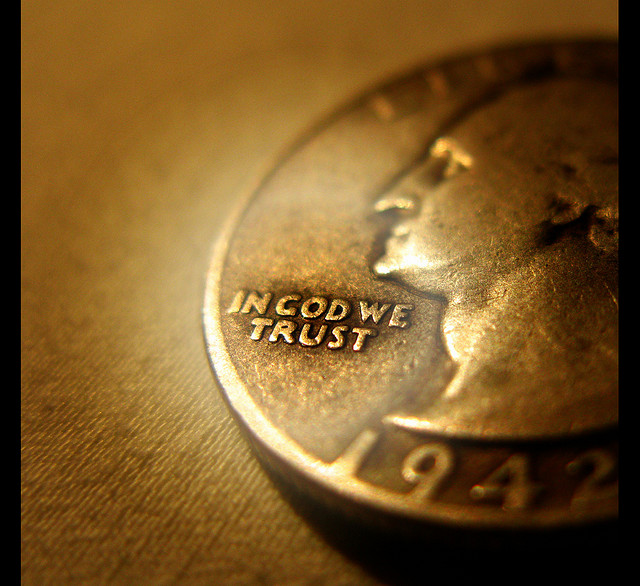“Inflation is when you pay fifteen dollars for the ten-dollar haircut you used to get for five dollars when you had hair” – Sam Ewing (baseball player)
According to Aneet Chachra and Steve Cain from Henderson, discussing inflation far too often devolves into a cage match between the “deflation forever” team versus the “hyper-inflation is coming” camp. The former has gained the upper hand with ECB President Mario Draghi pushing through a comprehensive easing package while Google searches for “helicopter money” are surging. However, based on recent economic data and the stabilization in commodities, a moderate pickup in inflation is more likely ahead. Meanwhile, the US Treasury Inflation-Protected Securities (TIPS) market appears to systematically underestimate future inflation due to structural reasons. Thus, bond markets and the Federal Reserve could be “behind the curve” necessitating two or more rate hikes in 2016 with a knock-on effect on medium-term yields. This is not a call for persistent, surging inflation, but rather a view that fixed income markets are overly optimistic in disregarding the risks of higher inflation.
February headline consumer price inflation (CPI) in the US was just +1.0% year-over-year (YoY), however core CPI (which excludes food & energy) rose +2.3% YoY, its highest reading since 2008. This wide differential was mainly due to lower commodity prices, especially crude oil which fell -32% YoY through February 2016. However, the March 2016 decline is much smaller at -20% YoY, and the futures curve projects that oil’s year-over-year change will turn positive during the fourth quarter of 2016.

Another deflationary force has been the rising US dollar which gained 20% over the last two years, reducing the cost of imported goods. But the year-over-year change for the dollar index just turned negative for the first time since mid-2014. This will gradually make imports more expensive for US consumers, although with a typical lag of 6-12 months.

Importantly, lower unemployment is finally driving higher wages with companies passing on some of the post-crisis profit margin expansion to employees. Fourteen US states have raised their minimum wage in 2016, with California (the most populous state) poised to further increase its minimum from $10/hour to $15/hour over the next five years. Labour markets have recovered not just in the US and the UK, but the unemployment rate in Japan is below pre-crisis levels. European unemployment remains elevated but has been improving since 2013.

Given all the above factors are widely known – why do TIPS still only forecast annual inflation of about 1.6% over the next decade? Perhaps TIPS prices are biased. There is an argument that TIPS should be expensive relative to nominal bonds as they are one of the few ways to directly hedge inflation risk.
But the available evidence since TIPS were launched in 1997 shows the exact opposite. Even with fairly benign inflation over the last 20 years, realized 5-year and 10-year inflation has averaged above TIPS-implied forecasts at issuance. The average gap has been about 0.35% per year ie. TIPS buyers have generally outperformed nominal bondholders.

Despite their valuable inflation protection qualities, why have TIPS historically been under-priced? Two reasons stand out. The first is their liquidity is poor relative to regular US bonds – traders joke the acronym really stands for “Totally Illiquid Pieces of Stuff”. Secondly, inflation expectations are often highly correlated to equity market moves particularly during large sell-offs. Hence TIPS do not provide the diversification to risk portfolios that other bonds do.
The generally negative correlation of nominal treasuries offer significant hedging benefits and are likely expensive to reflect this “crisis alpha” value – especially in the era of Risk Parity funds. Thus nominal treasuries are overvalued, TIPS are undervalued, and both distortions artificially compress the implied inflation rate forecast. An alternative measure that uses nominal 10-year yields minus trailing 12-month core CPI shows that real US 10-year rates are currently near 30-year lows of -0.5% per annum.

An interesting historical precedent is the 1985-1988 period when oil prices collapsed from above $30/barrel in late 1985 to below $10/barrel in 1986 pushing inflation lower. However, starting in 1987 (see black line below) a gradual rebound in oil prices drove a spike in CPI. This led to several Fed rate hikes and a significant selloff in US treasuries, with bond yields rising from 7% to above 9% within six months.

“Although we are unlikely to see a bond selloff quite as severe as 1987 given sluggish world growth and low yields globally, fixed income markets appear to be ruling out even a modest spike in rates. We should also not underestimate the highly stimulatory effects of cheap energy on importing nations where offsetting shale oil industries do not overwhelm them – eg. the Eurozone and Japan. Remarkably, Fed funds futures are only pricing in one rate hike this year, while US 10-year yields have fallen about 30bps in the last five months despite a concurrent 40bps rise in core CPI. Stronger inflation data and consequently a rise in bond yields appear to be an underappreciated risk,” they conclude.
Source: Bloomberg, as at 30 March for all data, unless otherwise stated.

